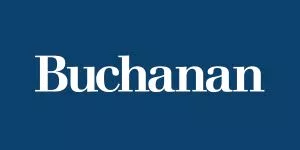- in United States
- in United States
- with readers working within the Advertising & Public Relations, Basic Industries and Retail & Leisure industries
- within Media, Telecoms, IT and Entertainment topic(s)
The NCAA's "Five-Year Rule" mandates that a student-athlete must use no more than four seasons of competition in the same sport within a five-year window, beginning when they first enroll in a collegiate institution. This rule is designed to encourage athletes to complete their degrees in a timely fashion but also allows for exceptions, such as redshirt years or NCAA-granted waivers for extenuating circumstances like injury, military service, or pregnancy. The NCAA's various eligibility rules have been a cornerstone of its regulatory system of collegiate athletics.
Since the Seventh Circuit's July 2025 decision overturning the preliminary injunction in Nyzier Fourqurean's lawsuit against the NCAA seeking an additional year of eligibility, litigation of this issue has continued to evolve. Despite the appellate court's holding that the University of Wisconsin defensive back failed to demonstrate a likelihood of success on the merits under the Sherman Act – largely due to issues regarding his proposed market definition and claimed anticompetitive effects – Fourqurean has not abandoned his fight against the NCAA's Five-Year Rule.
Earlier this month, Fourqurean filed a renewed motion for a preliminary injunction supported by a declaration from Wisconsin head coach Luke Fickell and a pending NIL agreement. In the filing, Fourqurean argues that he continues to face irreparable harm both financially and athletically by being denied the opportunity to compete during the 2025-26 college football season. A hearing on the renewed application is scheduled for October 20, 2025, though it remains to be seen whether a definitive resolution of Fourqurean's eligibility will be reached before the season concludes.
Meanwhile, the NCAA is headed to court on September 16, 2025 in a separate case after electing to appeal a similar preliminary injunction granted to Vanderbilt quarterback Diego Pavia back in December 2024. Pavia is a junior college transfer who argued that his JUCO participation should not count toward the NCAA's Five-Year Rule. The Tennessee federal district court agreed, ruling that the NCAA's strict eligibility limit likely violates federal antitrust law by restricting college athletes' ability to fully capitalize on their name, image, and likeness. The Court reasoned that the Five-Year Rule may unfairly suppress athlete compensation via NIL and potentially reduce competition in the market for college athletes.
Earlier this year, in the wake of the Pavia decision, the NCAA issued a blanket waiver that extended an additional year of eligibility to JUCO transfers, opening the door for more athletes to gain an additional year of playing time, and, in turn, more NIL opportunities. Many view this decision as a direct result of the growing legal pressure on the NCAA's eligibility framework, which raises critical questions regarding the interaction of rigid eligibility rules with the commercial realities of NIL. These questions are quickly coming to the fore. Most recently, on August 27, a Texas federal court granted Indiana safety Louis Moore's request for a 14-day extension of a temporary restraining order against the NCAA, ensuring his eligibility for the first two games of the season. Moore is a sixth-year player who has spent the last three years at the FBS level and who transferred from Ole Miss to Indiana following the blanket waiver prompted by the Pavia litigation.
The Fourqurean, Pavia and Moore matters will inevitably revisit the antitrust analysis laid out in the Alston and O'Bannon litigation, as well as the NCAA's purported justifications for eligibility rules in an evolving NIL era. This analysis is further impacted by rule changes established under the landmark House settlement, which went into effect on July 1, 2025. While the NCAA attempts to establish coherence for the enforcement of its Five-Year Rule (and, implicitly, its abandonment of various other restrictions), athletes will likely continue to test the limits of antitrust law and the NCAA's regulations. These developments reveal both the courts' increased willingness to scrutinize longstanding NCAA restrictions through the economic lens of NIL, as well as the unsettled legal landscape in which athlete compensation, competitive balance, and antitrust liability are deeply intertwined.
As these cases continue to develop, Buchanan offers a comprehensive suite of services, providing guidance tailored to athletes, institutions, collectives, and businesses involved in the NIL space to ensure compliance and support at every stage.
The content of this article is intended to provide a general guide to the subject matter. Specialist advice should be sought about your specific circumstances.




